Turnbull and Frydenberg kept telling us that the review of the national Electricity Market had to serve three ends. We need energy security to keep the lights on, we need cheaper prices, and we need to reduce emissions. In view of the science outlook on climate change, reducing emissions is a sine qua non, literally ‘without which nothing’ – in short an indispensable element.
Michael Slezak at The Guardian says that Australia’s policies on climate change have become poisoned by pragmatism. Bill Hare from Climate Analytics took a look and was horrified. The cuts modelled by Finkel stick out like a burning coal stack:
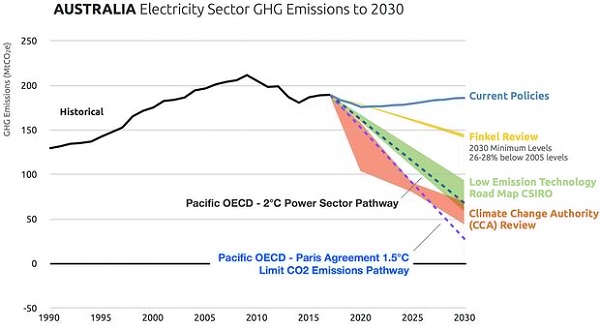
However:
- not only did he model emissions cuts that were inconsistent with the Paris agreement but he said any deeper cuts would cause problems for the energy system. And he recommended that, if more ambitious cuts were to be considered by government, the work done in his report would need to be redone, to examine their implications. (Emphasis added)
Finkel modelled the reductions to mirror the Coalition target of a 26 to 28% cut in emissions by 2030. Yet around the world cutting emissions in the electricity sector is the leading part, the easy bit. Decarbonise the grid as an early priority, so that other parts of the economy become easier to tackle. Simple examples include charging batteries for electric cars with clean energy, clean public transport, and clean energy to manufacture synthetic fuels.
This is the electricity sector in the context of our total emissions:
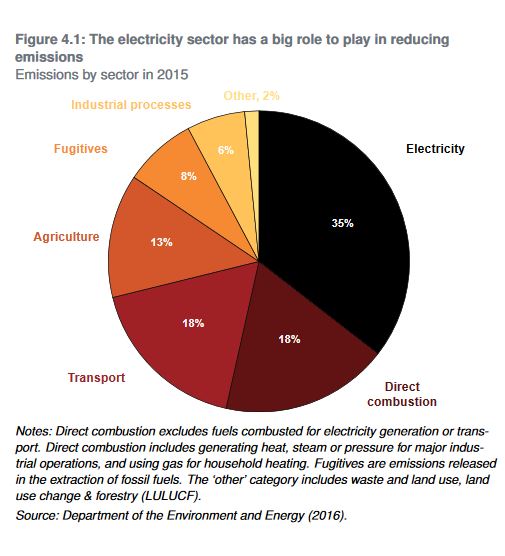
Here is the electricity energy mix envisaged by Finkel’s Clean Energy Target:
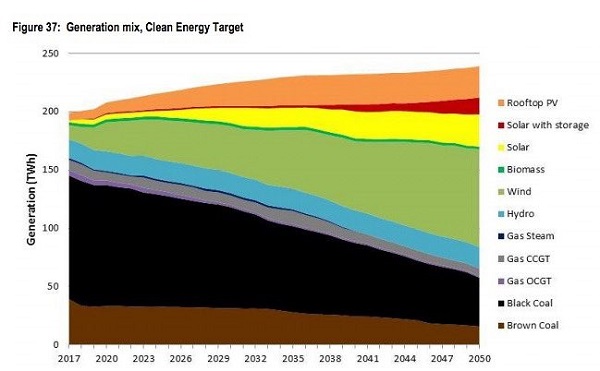
Remember in Looking forward to Finkel the report of last December from the CSIRO and Energy Networks Australia said that wind and solar will provide nearly all our electricity needs by 2050, and save about $100 billion while doing so:
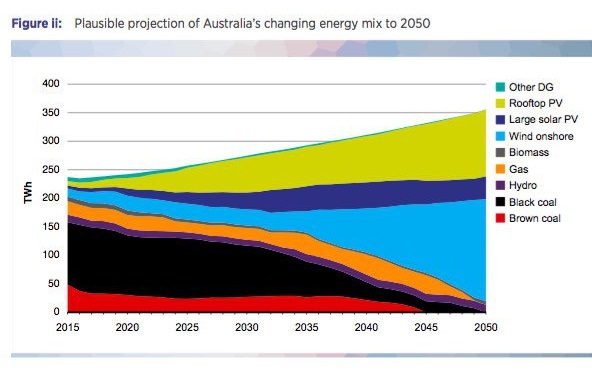
Now Bloomberg New Energy Finance’s New Energy Outlook 2017 has hit the deck showing a very different profile for renewable energy world-wide:
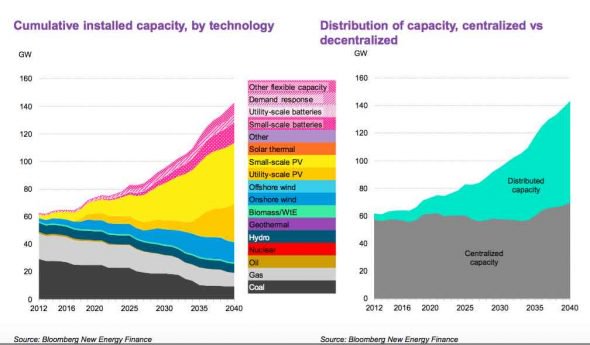
Reaction to the review has varied. Notably, the South Australian government is on board, but The Greens and NGOs were generally appalled.
The Greens dismiss the report as a political fix.
I would endorse the reaction of the Australian Conservation Foundation:
- Chief Scientist Alan Finkel was given an impossible task: design an energy system that would tackle global warming but still keep Tony Abbott and the climate deniers happy. The result of Finkel’s mission impossible is a clean energy target that is actually very, very dirty.
The most critical question is: will this blueprint actually reduce pollution in line with what’s required to halt dangerous global warming. The answer is no it won’t. …The science is clear – we need a zero-pollution power sector, as soon as possible. This report puts off the decision on how to do this for another three years. Climate science tells us there is no room for new coal and gas, and our Chief Scientist missed an opportunity to make that clear to the Turnbull government.
(Emphasis added)This is the current Australian electricity mix by fuel type (from the Climate Law Blog):
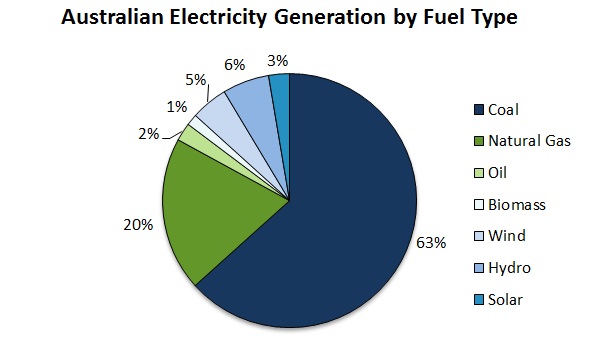
Remember science tells us that for a safe climate there is no burnable carbon left.
This is how Finkel sees the future:

That’s 24% coal and 3% gas in 2050.
Spookily the Finkel Report reads better than the actual recommendations and the quantities displayed in tables and graphs. To some degree, it seems, he was hampered by the dodgy modelling of the Jacobs Group. However, there is little doubt that Michael Slezak at the top of the post was right – the review became poisoned by the pragmatism of trying to suit the report to the politics of the day.
The report has much of interest, which I’ll come back to in future posts. meanwhile I recommend Giles Parkinson’s Coalition’s war on cheap power: When fools design energy policy.

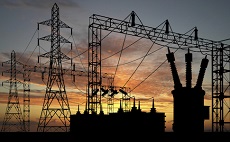
To make a point picked up by the Australian Conservation Foundation, Finkel sees the institution of an Energy Security Board prior to “the development of a NEM-wide integrated grid plan to inform future investment decisions.”
This will take at least three years. I think many thought the Finkel Review itself would formulate such a plan.
Finkel is a chief scientist, not a chief engineer. DEveloping grid plan alternatives is not acientists job.
John, personally I accept that. And personally I didn’t spend much time thinking about Finkel would do, not being either a scientist nor an engineer.
Finkel gives an integrated grid planning role to AEMO. From the executive summary:
This is important, because no-one has had this role to date. The NEM is not an integrated grid, rather a stitched up connection of grids, with the connectors at state borders acting as a choke as well as a connector. If you were generating power in Tweed Heads and wanted to share with someone in Coolangatta I think it would have to go via Goondiwindi, or somewhere out there.
Hey, John, listening to Finkel on the radio just now, he says he’s an engineer!
He’s a Neuroscientist, Electrical Engineer and a green.
He said he’s been also a businessman and in party an academic, so he knows stuff, knows how to do stuff and has done it.
Actually he’s not to blame for the lack of government urgency and weak targets.
He’s just been talking to the National Press Club. I heard part and was impressed. ABC cut off coverage just when Tim Colebatch asked some very pertinent questions about the assumptions underlying the report, so I look forward to Colebatch’s next article.
According to the SMH online, the Coalition party room has rejected the Finkel Clean Energy Target, which supposedly was the foundation of his whole approach.
Back to square minus 10.
Ambi, I think, in fact I’m as certain as can be, that the party room has just set aside the CET for further work.
That doesn’t mean it will be easy.
If that’s the case, back to square minus 1, then.